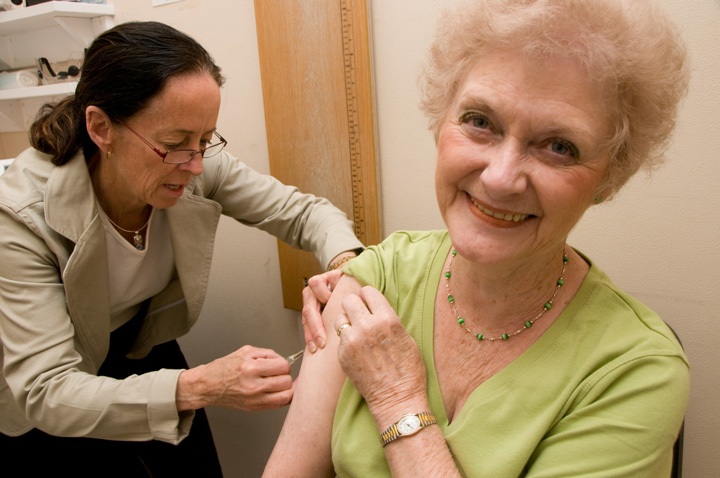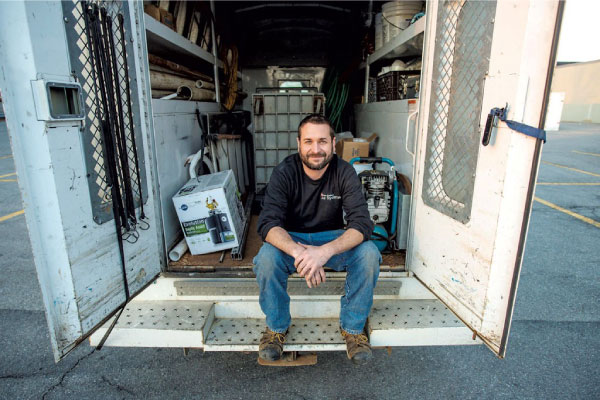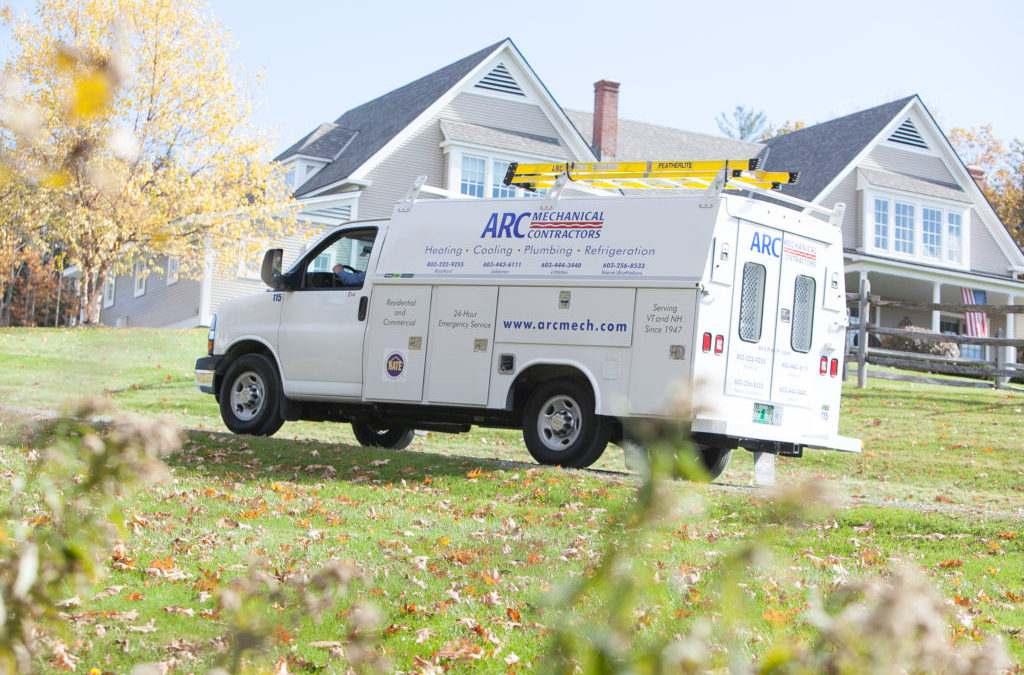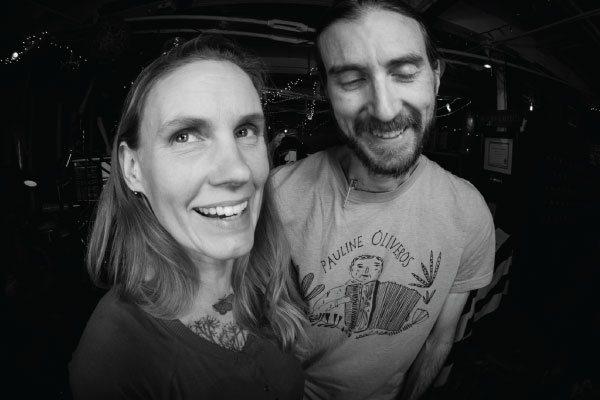
by Kelsey Price | Dec 9, 2019 | Awards and Rankings, Healthcare, News
Vermont is once again the healthiest state in the nation, according to the United Health Foundation’s newly released America’s Heath Rankings annual report. The state moved up three steps to reclaim the top spot in the Foundation’s 30th year documenting the nation’s health trends, challenges and opportunities.
For nearly two decades, Vermont has ranked among the top five healthiest states, as gauged by the Foundation’s review of 35 core measures, including health behaviors and outcomes, clinical care, policy impacts, as well as community, environmental and socio-economic factors.
“Vermont’s place at the top of this list reflects our commitment to health in all 251 communities and across provider networks from hospitals to home and community based providers,” said Governor Phil Scott. “While there is always room for improvement, our position as the healthiest in the nation speaks to the high quality of life we offer in Vermont. As we continue to work to grow the economy and our workforce, make Vermont more affordable and protect the most vulnerable, our health outcomes are a tool we can use to market Vermont as a great place to live, work and raise a family,” Governor Scott added.
Vermont’s data reflects a significant drop in health disparities – an improvement of 44 places among state rankings. Health disparities are an important indicator of differences that may occur by gender, race or ethnicity, education, income, disability, geographic location, and sexual orientation, among others. The state also had one of the lowest rates of violent crime.
“All of us can take great pride in where we stand today,” said Health Commissioner Mark Levine, MD. “I’m particularly pleased with the steady progress we have made in reducing the rate of adult obesity and smoking, increases in childhood immunization rates and physical activity, and in our significant gains in reducing health disparities among Vermonters.”
The report also focuses on the health challenges Vermont faces. Deaths related to drug and other substance misuse continue to rise, and the state continues to wrestle with higher rates of chronic conditions like diabetes, and risk for vaccine-preventable diseases, such as pertussis.
Dr. Levine said the data is also important in showing where more work is needed. “We are number one overall, but in some measures, relative to other states, we may only be doing less badly,” said Dr. Levine. “Bending the curve on unhealthy behaviors and outcomes is difficult, and we have a great deal more work to do.” Levine cited the rapid rise of vaping among young people as a threat to decades of progress against tobacco use, and the need to further impact increases in chronic diseases and cancer-related deaths.
“We will look deeply into this data, to continue our strategic plans and programmatic efforts to build on our successes and to reverse the trends that negatively impact the health and well-being of all Vermonters,” Levine added.
America’s Health Rankings 2019 Annual Report: americashealthrankings.org
Vermont Scores
Executive Highlights
Full Report

by Kelsey Price | Dec 7, 2019 | Meet Your Neighbors, Northwestern Vermont, Professional Services
Chris Boudreau has been flush with work lately, and he doesn’t see things letting up anytime soon. With the early arrival of freezing temperatures in Vermont, the 38-year-old master plumber has been dealing with a higher-than-normal volume of burst pipes and inoperable heating systems. And that’s along with the usual customer calls about clogged drains, broken fixtures and leaky toilets.
A commercial plumber with New England Air Systems in Williston, Boudreau handles “pretty much anything that involves pipes and water,” including fixtures that carry liquefied petroleum and natural gas. And as a “master,” he is allowed to train apprentices, pull permits and run his own shop.
Though some might assume that a plumber’s job is dull or undesirable, Boudreau said that, after 16 years in the trade, he’s used to chilly basements and foul gas odors.
“There’s never a mundane day in plumbing,” he said. Case in point: When a water main burst and flooded the FlynnSpace — the basement black-box venue of Burlington’s Flynn Center for the Performing Arts — in August 2018, Boudreau was called in to fix it. (Like doctors and lawyers, he declined to discuss his clients’ specific plumbing woes.)
Boudreau, who lives in Winooski, now mostly works Monday-to-Friday hours in Chittenden County, though occasionally he travels to clients in Barre, Montpelier, Randolph and New Hampshire.
“Sometimes you just have to go where the work is,” he said. “That’s just part of the trades.”
Boudreau recently spoke to Seven Days about the plumbing profession and the need for more young people to enter the career pipeline.
What are the most common plumbing mistakes you encounter?
I see a lot of pipe fittings being misused, especially in drainage. If you’re not familiar with plumbing code, there are a lot of things that need to be done to make sure pipes drain properly. Obviously, I’ve seen a lot of funny things flushed down the toilet. I’ve found diapers — which are terrible to put in your pipes, because they expand in water — as well as cleaning wipes and feminine hygiene products. I wouldn’t flush anything down the toilet that’s not waste or paper.
The same with food waste. I once had a clogged-drain call at a house, and I had trouble figuring out what it was. There was a garbage disposal, and the owner had been putting eggshells into it. The crushed eggshells became like sand and completely clogged the pipes. The homeowner denied it, but his 5-year-old daughter gave him away.
When should people call a plumber rather than trying to fix a problem themselves?
When they realize that they don’t understand what they’re doing. [Plumbers] get a lot of calls from people who are halfway into a job and then realize they’re in way over their head. If you’re not comfortable with, or have knowledge of, what you’re touching, it can be very dangerous, particularly when it comes to heating systems and water heaters.
I would never recommend anyone who’s not trained to touch heat or hot-water venting systems. Carbon monoxide is one of our biggest concerns. Also, equipment like that has safety valves; sometimes people will see them dripping and think that they should plug it up. But by dripping, the valve is actually doing its job of letting off pressure. Plugging it can turn your water heater into a bomb.
What’s the best part of your job?
It’s really rewarding to fix a problem for a customer, whether it’s residential or commercial. With commercial jobs, people can be really thankful that their production is up and running again. It costs businesses a lot of money when problems happen. Even for residential customers, when someone has frozen pipes or their heat is out, for me it’s really gratifying to be able to troubleshoot and fix a problem.
Do you ever work in unusual places?
Oh, yeah. Everything from operating rooms to a morgue. One of the most interesting was working in a prison and having to have my tools inventoried every day, working in the same hallways as the inmates, finding all sorts of implements that were flushed down into the system. Being a commercial plumber, I have a lot of really interesting customers, so I get to see how the sausage is made behind the scenes.
Does the plumbing trade have a shortage of new workers?
Oh, yeah. It’s a big issue, actually. To some extent, there’s a stigma associated with the trades. It’s a lot of hard work up front when you’re an apprentice and you’re working under somebody. You’re doing a lot of the nasty grunt work. You’re not necessarily being paid super well, and it doesn’t always seem like there’s a light at the end of the tunnel.
I was lucky. I remember voicing my frustrations as an apprentice, and there was an older guy who was near retirement age. He told me to stick with it because he saw the shortage coming and basically told me, “All in good time.” And he was right. It’s a great career. You just have to be willing to put the work in and get your hands dirty.
A version of this article first appeared on sevendaysvt.com and in Seven Days newspaper, a Burlington-based newsweekly published on Wednesdays and distributed for free at more than 1,000 locations in northern and central Vt. and Plattsburgh, N.Y. Photo by GLENN RUSSELL

by Kelsey Price | Nov 21, 2019 | Construction, News, VTP, Workforce Training
ARC Mechanical, an HVAC contractor, recently received over $14,000 in grant funding from the Vermont Training Program (VTP).
With this grant funding, ARC Mechanical will focus on employee training in areas of plumbing, HVAC, gas training and sheet metal fabrication. Training will be done through professional development and apprenticeship programs at Vermont Technical College, New Hampshire School of Mechanical Trades, Mitsubishi Electric, and Granite State Trade School.
“Operating a business like ARC requires a high level of knowledge and expertise in many facets of the mechanical industry,” said Human Resources Manager Brenda Oakes. “With the skilled labor shortage, ARC believes that investing in apprentices with a strong interest in the field and a passion for learning allows us to ‘grow our own.’ The additional education in plumbing, heating, ventilation, air conditioning refrigeration and sheet metal as a result of this grant helps achieve the goal of having an independent and knowledgeable employee who provides excellent customer service and quality workmanship for our customers.”
The trainings will help expedite the timeframe for employees to feel both comfortable and confident in their job duties. In addition, new skills can translate to new market opportunities for the company.
“ARC Mechanical continues to advance its employees’ knowledge and training for the career ahead of them. The result is a satisfied customer base that goes back 70 years. We are happy to be able to support this through VTP,” said Joan Goldstein, Department of Economic Development Commissioner.
Bob Haynes, Executive Director at Green Mountain Economic Development Corporation added that ARC is a prominent mechanical contractor in the region (Vermont and New Hampshire) and a key employer in the Upper Valley and Bradford specifically. “They have great careers and security for well-trained and motivated workers. This is a wonderful program for all concerned.”

by Kelsey Price | Nov 20, 2019 | Incentives/Financing/Programs, Manufacturing, News, VTP, Workforce Training
Omega Optical, a southern Vermont-based manufacturer, has received a $9,000 Vermont Training Program (VTP) grant from the Vermont Department of Economic Development.
For decades, Omega Optical has made a variety of optical filters products used by both government and private organizations. Omega Optical continues to create innovate products and serves as a key supplier to companies involved in aerospace, defense, and life science operations. Omega Optical will use the grant to train employees a valuable curriculum of basic inferometry training, machine math training, advanced machine tool technology training, and CNC machine training.
“Our technical production staff has greatly benefited from the training and its impact has been so positive on our workforce,” said Jennifer Locascio, Director of Human Resources. “Given the skills gap in the emerging optics and photonics industry, programs like the Vermont Training Program are invaluable to companies like Omega. We very much appreciate the program and support!”
Global optics and imaging is a growing industry, but many experienced technicians are approaching retirement. Omega Optical views it as vital to continually train its employees. Its products and services are built on years of technical experience, software knowledge, and other problem-solving skills. Equipping employees with this knowledge allows them to better serve customers today and likely create new products along the way.
“Brattleboro Development Credit Corporation (BDCC) is grateful to have a state program like VTP,” said Alex Beck, BDCC Workforce and Education Specialist. “The program supports the local businesses by investing in people through training and education. The BDCC’s knowledge of local needs, paired with the VTP’s expertise and funding, is emblematic of the kind of public-private collaboration needed to support employers like Omega Optical, and to help Vermonters build the skills they need to access economic opportunity.”

by Kelsey Price | Nov 20, 2019 | Creative Economy, Diversity, Meet Your Neighbors
Ariel Zevon is a singer songwriter based in Vermont who recently appeared on the podcast Rocket Shop Radio Hour, which features Vermont music and artists.
When I first walked into Rocketshop the night of Ariel Zevon and Gahlord Dwald’s duo performance, the first thing I heard was a sound check. Emanating from one of the speakers was a low,ominous, bass heavy sound, and my first reaction was, “Damn, that sounds like a UFO.” When incorporated into the beat, Gahlord produced this ethereal, cosmic sound that I can best describe as the musical equivalent to stargazing. It was like someone applied a tune and vocals to the deep, ominous white noise one would imagine space having.
Little did I know at the time, but I was listening to “Digitize My Heart,” by Ariel Zevon, straight off her album The Detangler. While Gahlord prides himself as a well-versed bass-man and improvisationalist, Ariel takes charge of songwriting in their combined efforts. Standalone, Ariel and Gahlord took separate paths to end up on the same stage.
Ariel was brought into music as an actor, initially avoiding music for years, simply viewing it as a writing form that she was both incapable of and not interested in. This changed with the Occupy Wall Street Movement, more specifically with the fact that her mother was an avid activist for it, being there on the street as it happened. With the push and mindset of “gotta contribute something,” Ariel began to pen parody songs for the movement to help spread their message. It was this that finally lit the spark and fanned the flame for Ariel’s songwriting career.
The other fifty percent of the duo, Gahlord Dwald, is best known for his improv, which took me by honest to god surprise. There’s people who improvise speeches, presentations, all the sort, but then there’s Gahlord, who improvises his entire bass part as the song plays. For him, the music is all about the sensations behind the sounds themselves, particularly how they feel, and furthermore: what they make the listener feel. It’s for this exact reason he enjoys playing alongside Ariel. In his own words, he feels that with Ariel’s songwriting he gets to “dance around the beat more,” and that “it’s hard to find other musicians willing to hang on for the ride.” Which, if anything, is an accurate assessment of what their music feels like.
Next up was the appropriately titled “The French Song.” The entire song is done in french, something only possible thanks to Ariel’s bilingual abilities. She says that it “brings up a different flavor” in the music, something anyone who has ever heard spoken French (or even the song in question for that matter) can agree on. It just sounds more musical than English, something “The French Song” nails home with it’s more soothing tone and verses. It was here that I also first noticed how well Gahlord’s base blends into the song, kind of floating in and out of the background, adding this deepening, earthy feeling that layered the sounds beautifully.
As far as them as a duo goes, the two knew each other in passing during time spent at Marlboro College, but only as far as “Yeah, I know of that person, but I don’t really know that person.” Years afterwards, through the combined might of social media and fellow musicians, the two in essence “rediscovered” each other and, most importantly, their shared passions. Both draw influence and aspiration from the avant garde, and both value the general nature of experimenting with the music to create something both of quality and wholly unique.
But uniqueness isn’t always something completely out of the blue and unexpected, like “The French Song.” Sometimes their uniqueness takes the form of “Fickle-Heart,” another song written by Ariel, straight off “The Detangler” album. This was much more of a folky, guitar-based melody with a sporadic and rapid energy to its chorus, trading highs and lows back and forth to create a terribly well paced song that had me—a person who doesn’t listen to this genre—grooving around in my seat. But most importantly, the bass here excelled and proved its purpose in these songs. Although Gahlord plays from mind more than paper, it was clear that he knew the song and its various ins and outs like the back of his own palm. The bass enhanced the background sound, making the music itself feel thicker, and added this gravity behind it that really brought it home.
The same stands true for what came as their final song of the night: “Black Oil.” Here, the songwriting by Ariel truly came alive with a haunting set of main vocals and verses. As one may assume from the name alone, the song relates to the poisoned environment, painting pictures of perishing plant-life and poisoned humans. When I say “haunting,” mind you, I’m speaking to a certain spine-tingling nature they have; how although the song plays soft and smoothly, the lyrics carry an eerie breeze with them, an element only accentuated by the low bass that looms in the background.
Although their setlist tonight at Big Heavy World primarily comes from Ariel’s album “The Detangler,” one shouldn’t only look there for their works. In addition to Ariel’s first album “The Marshlands,” the two have been performing live and experimenting in their genres consistently since. Currently, Ariel has confirmed that Gahlord has/is contributing pieces for a new album by her, and that talks are currently happening on the idea of a duo-album. Until that time comes, they can be found performing around Vermont, continuing to experiment with their music and letting others feel it.
Text by Thomas Himmield.





